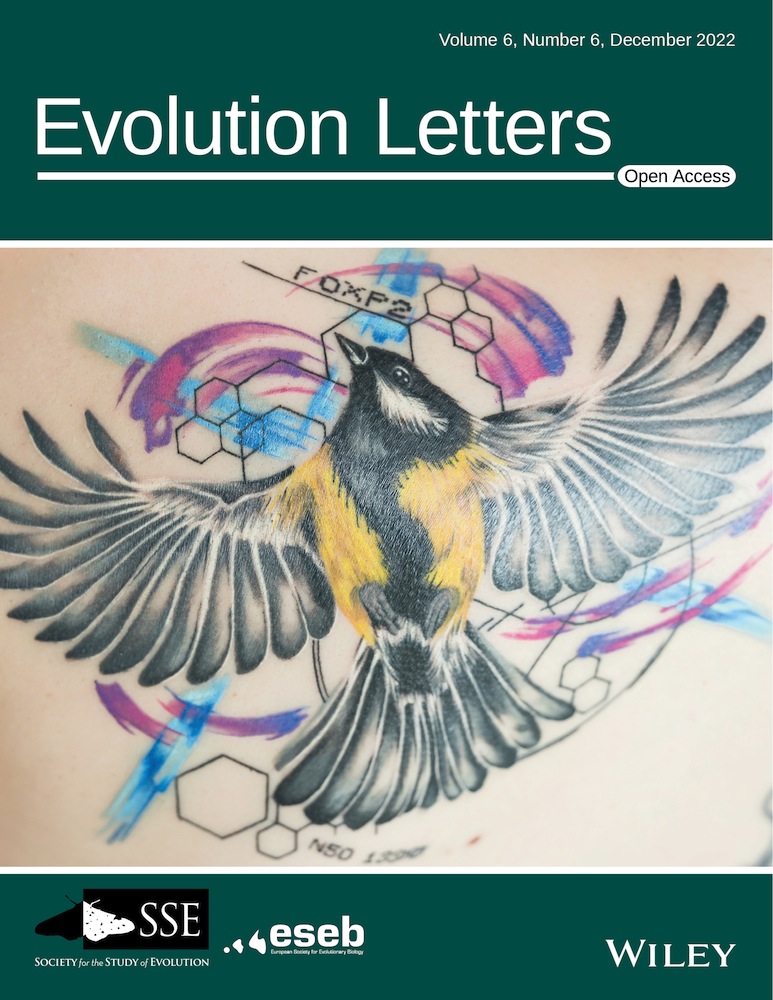Goldfish phenomics reveals commonalities and a lack of universality in the domestication process for ornamentation
IF 3.4
1区 生物学
Q2 EVOLUTIONARY BIOLOGY
引用次数: 0
Abstract
Domestication process effects are manifold, affecting genotype and phenotype, and assumed to be universal in animals by part of the scientific community. While mammals and birds have been thoroughly investigated, from taming to intensive selective breeding, fish domestication remains comparatively unstudied. The most widely bred and traded ornamental fish species worldwide, the goldfish, underwent the effect of long-term artificial selection on differing skeletal and soft tissue modules through ornamental domestication. Here, we provide a global morphological analysis in this emblematic ornamental domesticated fish. We demonstrate that goldfish exhibit unique morphological innovations in whole-body, cranial, and sensory (Weberian ossicles and brain) anatomy compared to their evolutionary clade, highlighting a remarkable morphological disparity within a single species comparable to that of a macroevolutionary radiation. In goldfish, as in the case of dogs and pigeons in their respective evolutionary contexts, the most ornamented varieties are extremes in the occupied morphological space, emphasizing the power of artificial selection for nonadaptive traits. Using 21st century tools on a dataset comprising the 16 main goldfish breeds, 23 wild close relatives, and 39 cypriniform species, we show that Charles Darwin’s expressed wonder at the goldfish is justified. There is a commonality of overall pattern in the morphological differentiation of domesticated forms selected for ornamental purposes, but the singularity of goldfish occupation and extension within (phylo)morphospaces, speaks against a universality in the domestication process.金鱼表型组学揭示了装饰品驯化过程中的共性和不普遍性
驯化过程的影响是多方面的,会影响基因型和表型,部分科学界人士认为驯化对动物具有普遍性。对哺乳动物和鸟类从驯化到强化选择性繁殖的驯化过程进行了深入研究,但对鱼类驯化过程的研究相对较少。金鱼是世界上饲养和交易最广泛的观赏鱼品种,通过观赏性驯化,其不同的骨骼和软组织模块经历了长期人工选择的影响。在此,我们对这一典型的观赏驯化鱼类进行了全面的形态分析。我们证明,与进化支系相比,金鱼在全身、颅骨和感觉(韦伯听小骨和大脑)解剖学方面表现出独特的形态创新,凸显了单一物种内显著的形态差异,堪比宏观进化辐射。在金鱼中,正如狗和鸽子在各自进化背景下的情况一样,最具装饰性的品种是所占形态空间的极端,强调了对非适应性特征进行人工选择的力量。利用 21 世纪的工具,我们对包括 16 个主要金鱼品种、23 个野生近亲和 39 个鲤形目物种的数据集进行了研究,结果表明查尔斯-达尔文对金鱼的惊叹是有道理的。为观赏目的而驯化的金鱼在形态分化上存在整体模式上的共性,但金鱼在(植物)形态空间内的占据和延伸的单一性,却与驯化过程中的普遍性背道而驰。
本文章由计算机程序翻译,如有差异,请以英文原文为准。
求助全文
约1分钟内获得全文
求助全文
来源期刊

Evolution Letters
EVOLUTIONARY BIOLOGY-
CiteScore
13.00
自引率
2.00%
发文量
35
审稿时长
10 weeks
期刊介绍:
Evolution Letters publishes cutting-edge new research in all areas of Evolutionary Biology.
Available exclusively online, and entirely open access, Evolution Letters consists of Letters - original pieces of research which form the bulk of papers - and Comments and Opinion - a forum for highlighting timely new research ideas for the evolutionary community.
 求助内容:
求助内容: 应助结果提醒方式:
应助结果提醒方式:


